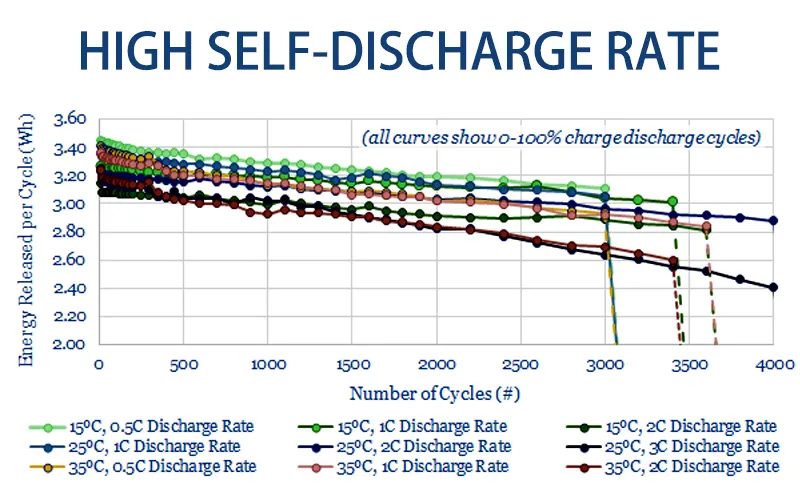Welcome to GM Tech
Welcome to GM Tech
In energy storage systems, electric vehicles and various portable electronic devices, lithium batteries are widely used due to their high energy density, long cycle life and excellent safety performance. However, for ordinary users, some technical parameters of lithium batteries are still relatively unfamiliar, among which **discharge rate** is an often overlooked but very critical performance indicator.
This article will analyze what the discharge rate of lithium batteries is from a professional perspective, and combined with GreenMore's product practice, help you better understand its practical significance for home energy storage systems and commercial energy storage cabinets.
1. What is the discharge rate of lithium batteries?
The discharge rate (usually represented by "C") refers to the ability of a battery to complete discharge within a certain period of time and is one of the important parameters for measuring the battery's output power capability.
In simple terms:
For example, if a lithium battery with a nominal capacity of 10kWh is discharged at a rate of 1C, its output power is 10kW; if it is discharged at a rate of 2C, the output power can reach 20kW.
2. The significance of discharge rate to energy storage system
The higher the discharge rate, the greater the power the battery can provide in a short period of time, making it suitable for driving high-power appliances such as air conditioners, water heaters, and water pumps. This is particularly important for household emergency power supply or commercial power peak regulation.
In the event of a grid failure or sudden load change, batteries with high discharge rates can respond quickly, provide stable power support, and ensure the continuous operation of critical equipment.
Selecting battery modules with appropriate discharge rates helps optimize the power configuration of the entire energy storage system and avoid problems such as "a small horse pulling a big cart" or "over-configuration".
3. Discharge rate requirements in different application scenarios
| Application Scenario | Typical Discharge rate (C) | Illustrate |
| Home energy storage system | 0.5C – 1C | Meet the needs of daily lighting and household appliances, emphasizing stability and safety |
| Commercial energy storage cabinet | 1C – 2C | Supporting industrial and commercial load regulation, peak load shaving and valley filling, requiring high power output |
| Solar energy storage system | 0.5C – 1C | Need to cooperate with photovoltaic inverter to achieve stable energy scheduling |
| Emergency backup power supply | 1C – 2C | Requires fast start-up and short-term high power output |
GreenMore's home and commercial energy storage product lines all use high-performance lithium iron phosphate (LiFePO₄) batteries, with differentiated designs based on different application requirements to ensure efficient and safe operation under various discharge conditions.
4. How does GreenMore optimize discharge rate performance?
As a professional energy storage solution provider, GreenMore has taken a number of key technical measures to improve the discharge rate of lithium batteries:
We use lithium iron phosphate batteries with excellent conductivity and thermal stability to ensure that they can maintain a stable voltage platform and low temperature rise under high-rate discharge.
Each GreenMore energy storage module is equipped with an advanced battery management system (BMS) that monitors discharge current, temperature and SOC (state of charge) in real time to prevent overload, overcurrent and abnormal heating, ensuring safe operation of the system.
By optimizing the internal structure and heat dissipation channels of the battery module, heat accumulation during high-rate discharge can be effectively reduced and the service life can be extended.
In commercial energy storage cabinets, GreenMore adopts a multi-module parallel architecture, which can flexibly adjust the total output power to meet high-rate discharge requirements while improving system redundancy and reliability.

5. How to choose the appropriate discharge rate according to needs?
When purchasing a home or commercial energy storage system, it is recommended to evaluate the required discharge rate from the following aspects:
If you are not sure about your specific needs, you can contact GreenMore's professional technical team. We will recommend the most suitable energy storage solution based on your actual electricity usage.
6. Is the higher the discharge rate, the better?
This is a common misconception: not all applications are suitable for using batteries with high discharge rates.
Advantages of high discharge rate:
Potential problems with excessive discharge rate:
Therefore, in practical applications, the discharge rate should be reasonably selected according to the specific usage scenario, load type, and system design goals, rather than blindly pursuing "the higher the better".
Conclusion
The discharge rate of lithium batteries is one of the key parameters to measure their output capacity and application range. It not only affects the performance of the energy storage system, but also directly affects the user experience and return on investment.
GreenMore has always been committed to creating energy storage products with high safety, high efficiency and high adaptability through technological innovation and engineering optimization. Our wall-mounted energy storage batteries, stacked energy storage batteries and commercial battery energy storage cabinets have all been rigorously tested and verified to meet the diverse discharge needs from home to industrial applications.
To learn more about the technical parameters and application scenarios of GreenMore energy storage products, please visit the official website www.gmsolarkit.com or contact our technical support team (email: export@gmsolarkit.com) to obtain customized solutions.
Please Read On, Stay Posted, Subscribe, And We Welcome You To Tell Us What You Think.


Copyright @ 2025 GM Tech All Rights Reserved.  Network Supported
Network Supported
Sitemap / Blog / Xml / Privacy Policy